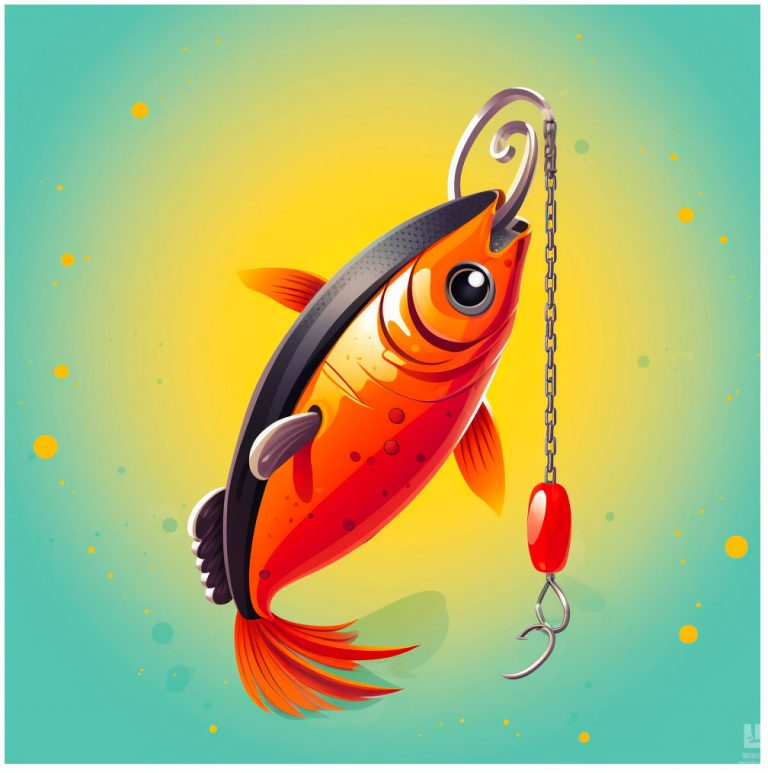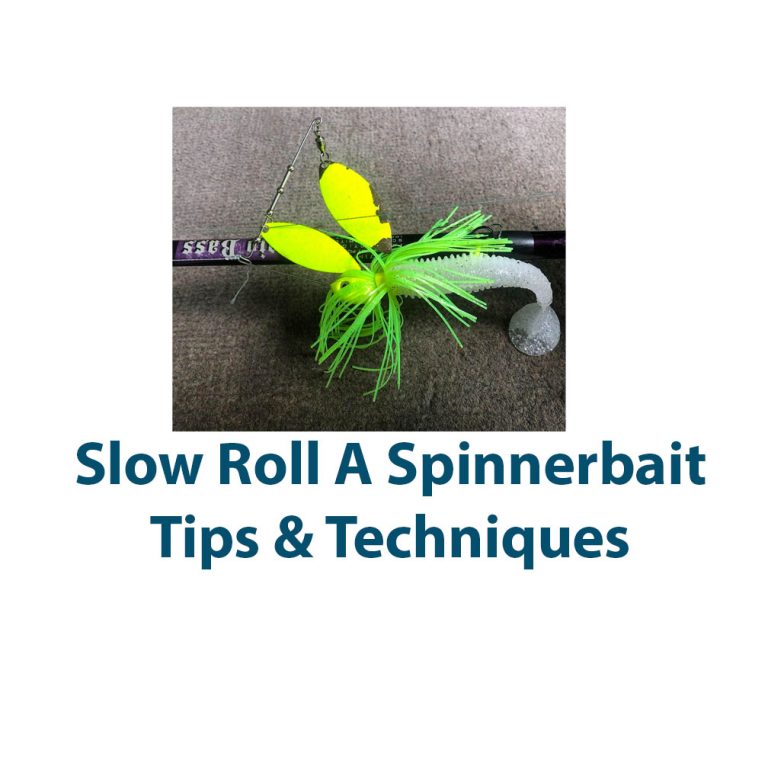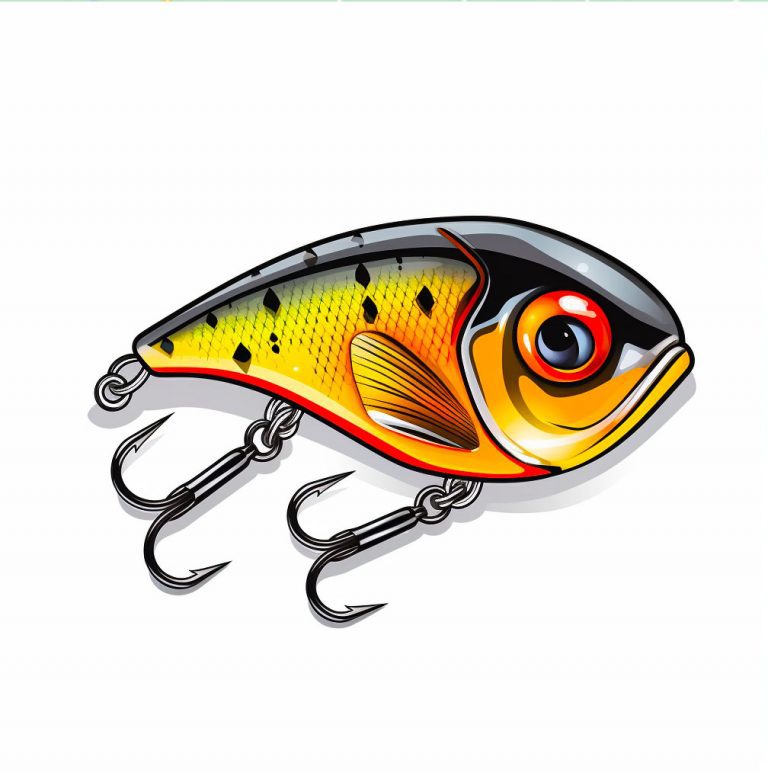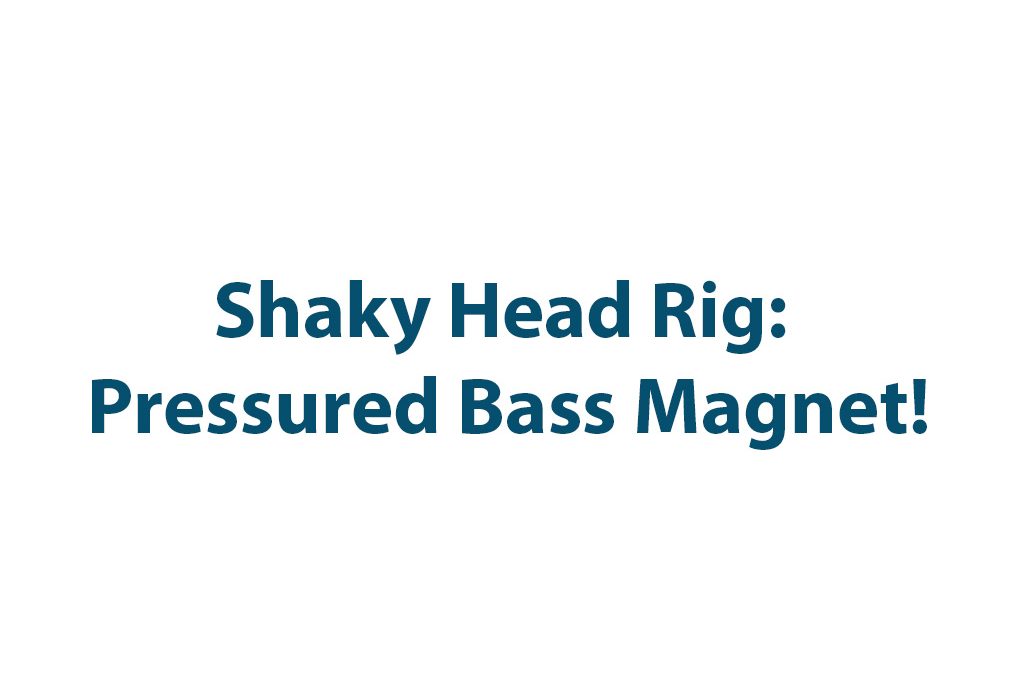Introduction
Good day! You should absolutely learn about shaky head rigs if you want to improve your bass fishing abilities. These rigs are simple to assemble, adaptable, and efficient in catching several types of bass. This article will provide a thorough examination of shaky head setups for bass fishing. What they are, how to set them up, various fishing methods, and much more will be covered. then let’s get going!
The Components of a Shaky Head Rig
Let’s look at the components of a shaky head setup before we get started setting it up. Three components make up a shaky head rig: a hook, a weight, and a soft plastic worm or bait. To help you capture those elusive bass, these three components must function flawlessly together.
Let’s start by discussing the hook. You should pick a hook with a large gap that is offset from the shank for a shaky head rig. By making it easier for the hook to enter the fish’s mouth, you increase your chances of successfully landing your catch. Additionally, you should pick a hook that can handle the size of the bass you’re after.
The weight, sometimes referred to as the jig head, comes next. A weighted jig head is used in a shaky head rig to provide the bait the weight it needs to dive to the desired depth. The worm or bait should be supported by the weight so that it hits the bottom straight and appears more appetizing to fish. Jig heads are available in a wide range of weights, ranging from 1/16 ounce to at least 1 ounce.
The worm or soft plastic bait is our last option. The bass will actually bite into this portion of the gear. Soft plastic baits come in a wide variety of sizes and forms, including curly-tailed grubs, stick baits, and critters that resemble worms or crawfish. To find the ideal bait for your local fishing place, you need experiment with a variety of baits.
Setting up the Shaky Head Rig
Let’s discuss how to build up a shaky head rig now that we are aware of its components. Initially, thread the worm or bait onto the hook until it completely encloses it. When the bait is on the hook, you want it to be straight, not angled. Because of its ability to stand upright when it strikes the bottom, it appears to fish to be a natural meal.
Add the weight to the line after that. You should pick a weight that is hefty enough to bring the bait to the bottom without feeling like you’re dragging a rock. As a general rule, pick a weight that is between 1/16 and 1/8 the size of the bait you’re using. Tie the line to the hook after sliding the weight onto the line.
It’s time to modify the rig so that it corresponds to the depth of the water you’re fishing in. Use a lighter weight if the water is shallow so that the bait doesn’t sink too rapidly. Use a bigger weight if the water is deeper so you can get to the bottom where the bass are hiding out. Finding the ideal weight and bait combination for the depth you’re fishing in may need some trial and error, but once you do, you’ll be catching more bass in no time.
Making your shakey head rig weedless is one last consideration. This makes it less likely for the hook to get tangled in underwater vegetation, enabling you to fish successfully in weedy places. You can slide a tiny piece of soft plastic onto the hook and cover the hook point to make your setup weedless. This will lessen the chance of the hook tangling with sea life without reducing your ability to capture fish.
Techniques For Fishing With Shaky Head Rigs
Now that your gear is ready, let’s speak about fishing methods. We’ll go through a few of the most well-liked techniques for fishing with a shaky head rig out of the many options available.
Casting your rig out and letting it drop to the bottom is one straightforward method. Reel in the line’s slack after it touches the bottom, then jiggle your rod slightly. This will cause a small amount of movement in the worm or bait, producing an alluring motion that will draw the attention of bass in the area. You can repeat the technique after letting the bait sit for a short while. In most bodies of water, including ponds, rivers, and lakes, this technique works.
Dragging the bait along the bottom is a another method. Let your rig sink to the bottom after casting it out. Once you’ve located it, steadily reel it in while pausing every few seconds to shake the bait. A pattern that resembles a worm or baitfish creeping over the bottom is produced by this motion. This method is particularly effective when fishing in deeper water near underwater features like rocks or submerged trees.
The wobbly head rig skipping across the water’s surface is the last method we’ll go over. This can be an excellent strategy for catching bass that are congregating close to the beach. Cast your rig out toward the water’s edge, then quickly reel it back in. A disturbance on the water’s surface caused by the jig head’s bounce will draw the attention of adjacent fish. On hot summer days when the bass are active and close to the surface, this technique can be quite beneficial.
Getting the Most out of Your Shaky Head Rig
You must pick the appropriate parts for your shaky head setup if you want to maximize its potential. Here are some pointers to assist you in making the finest decisions.
The secret is to experiment while choosing the proper size and color of bait. Depending on the type of water or the time of day, certain colors and shapes may perform better. A bright pink worm might perform well in murky water, while a green pumpkin creature bait would be ideal on sunny days. It’s crucial to take into account what the bass in your area are feeding on and select a bait that as nearly resembles their natural prey as you can.
In addition, you should match the hook’s size and weight to the target fish’s size when selecting a jig head. You will struggle to hook and land large bass if your hook is too small. The opposite is true, though, if your hook and weight are too big.
, you may struggle to get bites from smaller fish. It’s all about finding the right balance. As a general rule, use a bigger hook and weight for bigger fish, and smaller ones for smaller fish.
Another factor to consider is the water conditions you’re fishing in. If the water is clear, you’ll want to choose a more natural-looking bait. On the other hand, if the water is murky or muddy, you’ll want to use a brighter, more visible bait. This will help the fish locate your bait more easily.
It’s also important to identify and fix common problems when using a shaky head rig. One common issue is getting snagged on underwater plants or debris. If this happens, try casting in a different spot or using a weedless rig. Another issue is not feeling the bite when a fish takes your bait. To help detect bites, keep your line tight and keep a close eye on the end of your rod. Once you feel a nibble, set the hook with a quick, firm jerk.
Shaky Head Fishing By Season
Introduction
Hey everyone, it’s time to discuss shaky head rigs, a crucial aspect of bass fishing. Shaky head rigs are a well-liked and productive method of catching bass, particularly at various times of the year. Everything you need to know about using shaky head rigs for bass in the winter, prespawn, spawn, postspawn, summer, and fall will be covered in this article.
Winter
Bass fishing is a challenge during the winter. Bass prefer to slow down in colder water and congregate in larger groups in deeper water. You must pursue them slowly and steadily while using your shaky head rig. I like to use a little worm and a light jig head that weighs between 1/8 and 1/4 ounce. This arrangement enables the bait to move through the water slowly, imitating a real worm. I advise concentrating on deeper water obstacles like drop-offs, ledges, and points when choosing fishing spots.
Prespawn
The bass begin to move into shallower water as the water warms up in preparation for the spawn. On your shaky head rig, you may now start utilizing bigger, more vibrant baits. I prefer to use a larger worm, such as a 7-inch trick worm, with a heavier jig head that weighs between 3/16 and 1/2 ounce. The bigger worm produces more vibration to attract the bass, and the heavier jig head allows you to cover more water more rapidly. Flats close to spawning regions, stream mouths, and structure where bass are congregating are some nice spots to fish during the prespawn.
Spawn
The bass become more aggressive during the spawn and will bite practically anything that approaches their nesting place. You must still take care not to startle them, though. I advise using a smaller worm, perhaps 4 to 5 inches long, and a lighter jig head, weighing between 1/8 and 1/4 ounce, while employing a shaky head rig during the spawn. This set-up enables a more delicate approach, which is ideal for capturing hesitant spawners. Try fishing close to nests that are clearly visible or any other structure where you can detect fish activity.
Post Spawn
The bass are healing from the spawn and seeking food to rebuild their vigor. Though not as deep as in the winter, they frequently travel to deeper water once more. Try using a finesse worm around 6 inches long with a lighter jig head, around 1/8 to 1/4 ounce, to catch post-spawn bass with a shaky head rig. When bass are not actively feeding, the finesse worm’s modest motion tempts them to bite. Pay attention to mid-depth structures like ledges, drop-offs, and brush piles.
Summer
The bass are active and aggressive during the summer because of the warm water. It’s crucial to employ a weedless setup when utilizing a shaky head rig in the summer to avoid snagging. I advise using a worm that is about 6 inches long and a heavier jig head that weighs between 3/16 and 1/2 ounce. Longer casts are possible thanks to the heavier jig head, and the larger worm contributes to increased vibration and bass attraction. Weed edges, boat docks, and any locations where the water is cooler, including inlets or creek channels, are the best spots to fish in the summer.
Fall
The bass are feeding hard in the fall as they get ready for the winter, so you may be more aggressive with your shaky head rigs. Fall fishing calls for jig heads weighing between 1/4 and 3/8 ounces, with worms measuring 6 to 7 inches long. Brighter hues work well in the fall as well; my personal favorites are chartreuse and green pumpkin. Look for structures, such as points, shrubs, or docks, close to where the bass are feeding.
Conclusion
You now have all the information you require to use shaky head rigs to catch bass during each season. Keep in mind to modify your strategy according to the bass’s behavior, the water’s temperature, and the bait you’re employing. The secret to success with wobbly head rigs is to remain patient and persistent regardless of the season. Have fun fishing!
Special Considerations
Despite the fact that wobbly head rigs work in a variety of situations, there are some unique factors to take into account. For instance, a different strategy is needed while fishing in crystal-clear water. Bass may see your bait more clearly in clear water, so you’ll need to take a more delicate approach. Consider using a smaller bait and fishing more gently and slowly.
Additionally, fishing amid dense cover calls for some unique methods. Use a weedless shaky head rig for fishing in weedy or brushy regions. This will aid in preventing you from becoming entangled in submerged branches or plants. In order to avoid upsetting the local flora and scaring away the fish, you’ll also want to be more cautious when casting and retrieving in these locations.
Finally, it’s critical to adjust to various weather scenarios. Bass tend to move more slowly and be less active when it’s cold outside. It’s more productive to fish slowly and with a smaller bait in this weather. Bass are more active and aggressive during warm weather. A larger, more noticeable bait may perform well in this weather.
Catching Different Species With Shaky Head Rigs
After going over the fundamentals of using a shaky head rig, let’s discuss how to catch various bass species. All three types of bass—largemouth, smallmouth, and spotted—behave slightly differently and can be caught using various methods.
Cast your shaky head rig near underwater features like rocks, submerged logs, or weed beds when pursuing largemouth bass. Around these structures, largemouth bass frequently hide out and wait for prey to pass by. To mimic their natural prey, try using a bait that is darker and more realistic-looking.
You should look for smallmouth fish in deeper water along rocky or gravelly bottoms. These places are where smallmouth bass prefer to congregate and feed on crayfish and other tiny animals. When fishing for smallmouths, use a lighter weight and a smaller bait and try to imitate the movement of a crawfish or baitfish.
Since they are more picky than other bass species, spotted bass can be a little harder to catch. Use a darker colored worm or bait when fishing for spotted bass. Cast your rig close to an underwater feature and fish slowly and gently. As opposed to other bass species, spotted bass prefer to hang out in deeper water, therefore look for deeper water regions with close underwater structure.
Conclusion
You’ve successfully finished reading our in-depth explanation on shaky head rigs for bass fishing. We addressed a wide range of topics, including the parts of a shaky head rig, various fishing methods, advice for getting the most out of your rig, and unique considerations for fishing in various environments and pursuing various bass species. You should be well on your way to mastering bass fishing if you keep this advice in mind!

Big Worms For Bass
Fishing big worms for bass – it may not be the first thing that comes to mind when you think of bass fishing, but it’s a technique that can be incredibly effective in all seasons of the year. As a passionate angler, I’ve had my fair share of ups and downs when it comes to […]

Fishing Carolina Rigs For Bass: The Highly Effective Ball And Chain
This article is going to cover fishing Carolina rigs for bass. Fishing is a beloved activity that people all around the world enjoy. However, there’s always a way to improve upon the experience. One of the ways is to use Carolina rigs when you’re fishing for bass. Carolina rigs are a fantastic way to catch […]

Chatterbait Fishing For Bass
Introduction Using a Chatterbait should be high on your list of options if you’re a fisher seeking for a novel and interesting technique to catch bass. One of the most adaptable and successful lures for bass fishing is the chatterbait. They deliver amazing results and are quite simple to use. I’ll be sharing my advice […]

Slow Rolling A Spinnerbait
Slow Rolling A Spinnerbait: A Comprehensive Guide I enjoy fishing a lot, and I’ve experimented with a variety of methods and equipment to get the best catches. Slow rolling a spinnerbait is a method that has regularly worked for me. Using this method, the bait is brought up slowly and steadily so that it can […]

Keitech Swing Impact Swimbaits for Bass
Introduction Hey there anglers! If you’re in the market for some new swimbaits for bass fishing, I highly recommend checking out Keitech Swing Impact Swimbaits. They’re a favorite among many fishermen, including myself, and for good reason. In this article, we’ll dive into the science behind these lures, the different types available, techniques for using […]

Crankbait Bass Fishing: A Comprehensive Guide
As a seasoned bass fisherman, I have tried countless techniques and lures over the years. However, crankbait fishing has always been one of my favorite methods for catching bass. With the right technique and equipment, crankbaits can be incredibly effective in luring in those elusive and trophy-worthy fish. In this comprehensive guide, I will share […]

